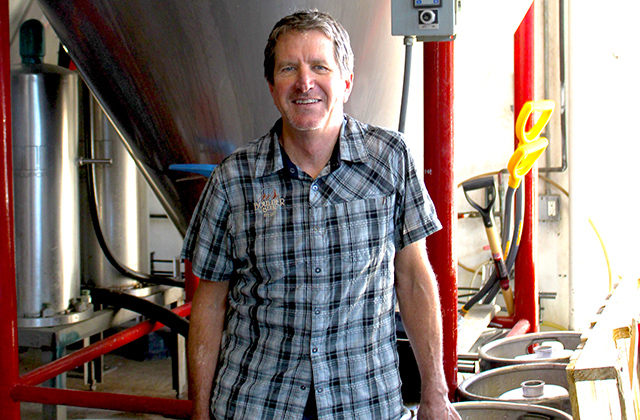
When Jeff Brown was 16, he and his family were driving through Colorado for a field archery tournament in Cedar City, Utah, and it was at that point he knew Colorado was where he wanted to spend his life.
A restaurateur that Brown worked for in high school — washing dishes, working in the kitchen — decided to open restaurants in Colorado. “So I moved to Colorado in ‘74, down in Colorado Springs and started to open restaurants with him,” Brown said. They eventually had 20-plus restaurants around the state.
“I had fallen in love with beer long before that,” Brown said. “As we started opening up these restaurants I really felt we needed to have better representation of the beers we had available. Back then you had some Michelob products, some Bud products, Coors Light wasn’t even really developed as a beer until ’78, ’79, so I saw there were beers I’d try around the country when I would travel that we weren’t able to get in Colorado yet. So I started working with distributors to bring in bigger, more full-flavored beers. Really I had beer in my blood long before I became part of the brewery.”
It was in 1982 that a waiter by the name of Daniel Bradford in the restaurant that Brown was operating approached him and said they were thinking about doing a beer festival in Boulder called the Great American Beer Festival. Bradford asked Brown if the restaurant might want to be a sponsor.
“I said, yeah we’re in,” Brown said. “And of course you know where the Great American Beer Fest is now.”
In 1990 Brown and his team were approached about taking over the operations of Boulder Beer, which Brown jumped into. “When we took over the brewery was doing 25-2,600 barrels,” he said. “At their height they had been at maybe 3,000 bbls.
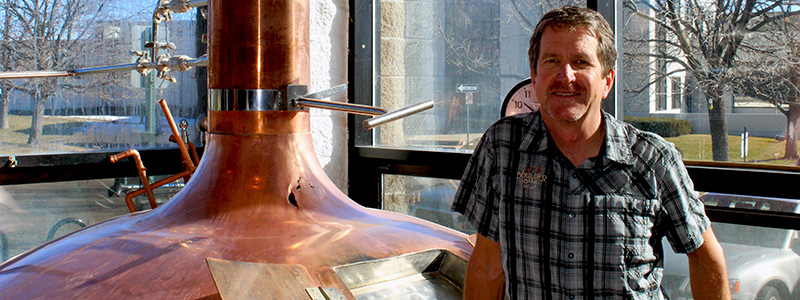
“Bought the brewery, really retrenched from the 20-25 states they’d be distributing to and really made Colorado our focus. Then we slowly started to branch out from there — Nebraska was our second state.”
Brown said early on in his tenure with Boulder Beer they became very cautious of distribution. “We were very selective of the distributors that we went into business with,” Brown said. “Back in the early ’90s we reformulated a lot of the recipes. David Zuckerman, the brewmaster, was instrumental in really helping us kind of focus on one or two brands, rebuild those, develop new brands and then we were able to expand from there.”
Boulder Beer experienced the explosive growth that a lot of other breweries experienced in the mid ’90s. “Kind of saw the retraction of where beers were at that time,” Brown said. “We pulled back from a couple of markets in the mid ’90s, but we didn’t really see the big decline that some of the other brewers were having at that time.”
The main components that Brown brought back into Boulder Beer were brewing in the brewery as opposed to contracting, developing an understanding of where the beer was being distributed and when it was being shipped by distributors. “We made that a huge focus,” Brown said. “One of the partners had a quality control background. She had worked in the pharmaceutical industry, so she made that her primary focus.”
Brown knew there was a huge potential with the brewery. “With working with the people, and seeing there was a gap of really creative, unique beer flavors within the Colorado market — the sky was the limit,” he said. “I saw it as there are 250 million people in America, but I thought we have a shot of being out there around 100 million people, rather than being landlocked to what the restaurant world had to offer.”
In the early ’90s Brown and Boulder Beer launched a malt-forward beer around 5 percent called Buffalo Gold. “A golden-style ale, what we considered to be a stepping-stone beer that would take the macro-beer drinker and start to initiate them to a beer that has more malt,” he explained. “We took that beer and used that as a beer we’d introduce to new distributors and retailers. That beer took off because it was the right style of beer for that time.”
As more breweries opened and became successful in Colorado, it started to also benefit the already existing Boulder Beer. “Colorado became known as the epicenter of craft brewing,” Brown said. “In the mid to late ’90s we had really taken a look at some of the best distribution partners that we could find around the country. That helped us kind of say, ‘we know it’s not a fad, craft beer is just going to continue to grow; certainly it will have peaks and valleys,’ there hadn’t been many valleys since the mid ’90s.”
Brown believes that the strategy for looking for quality distribution partners is key for any brewery that wants to distribute out of their own region. “For some brewers it might be a love/hate relationship, but some of my best friends are in the distribution side of the business,” he said. “And they’re business people and they look at it as a business, as they should. They’re making the best decisions for their business that they can make, and we like to support them as much as we can.”
The next key to success that Brown attributes to was the amount of other breweries that were looking to expand outside of the state. “It made the access to affordable freight better,” he said. “We cooperatively ship with just about every brewer along the front range. We’ll pull loads with New Belgium, Avery, Left Hand, Great Divide; and so that’s really been, I think, one of the cool aspects of being in Colorado.”
To date, the business is certainly where Brown hoped the business would be, but he sees a lot of potential for growth still on the horizon. “Would I like to see us maxing out this facility at 60,000 bbls? I would over the next couple of years,” he said. “But what I’m really pleased with are the total number of breweries and the way the industry still conducts itself.
“At one point I knew every brewer in the state, and unfortunately right now, I haven’t even met every brewer in Boulder County. As a person who loves beer, I couldn’t be happier on the variety of beers, styles of beers and the number of people that are brewers and work for craft brewers, it’s fantastic.”
Boulder Beer is continually working on new programs. “As you look outside Colorado, a lot of the beer that is purchased by consumers is in the grocery store chanel,” Brown explained. “That’s where we’re spending more time continuing to build those relationships, so that we can get better representation, better execution.”
Some of those difficulties have been the showcase of data points that a brewer can show grocery chain buyers. “Without those data points it’s hard to crack into those chains,” Brown explained. “You’re kind of in that catch-22. I can’t get data points until I get some beer on the shelf, so it’s constantly building that.”
Brown said Boulder Beer does have significant data points from other areas of business that are similar, such as Whole Foods and other nationwide stores. “We have distributor partners that are in line with those major chains,” Brown said. “Some of them, up until recently, didn’t have the infrastructure to call on the Kroger chain.” Now those distributors, most of them have maintained a craft and import strategy, are now large enough to call on multiple stores of the larger chains, which is giving Boulder Beer a leg up.
“Our model, moving forward, is really to look at who is going to align best with our brewery culture and really give us the focus that our sales potential has within their market,” Brown said. “We’ve got small, half a dozen, or a dozen employee distributors, and we’ve also got big distributors where you’ve got 400 employees. I think the key is to have a distributor follow through with the commitments that they’ve signed on for in terms of getting our product to market, representing our product and then also monitoring the product once it’s in the market.”
Brown said he has seen positives and negatives on both sides of the aisle, whether it be with a craft-focused distributor or a larger distributor. When they went with a freshness date more than half a dozen years ago it had a two-fold reasoning. Of course Boulder Beer wanted the consumer to know what they were drinking fit the timetable for what Boulder considered a fresh beer. However, the second part of that was to develop a stronger tie with the distributors and ensure that they knew what beer was aging out and needed to be taken off the shelf.
This strategy, of course, is almost commonplace today, but understand why the date is on the package: from consumers to all angles that help the brewery, is vital to the growth success of the business. “Since taking over the brewery we are not going to budge from continuing to tell people we want the beer to be fresh as possible,” Brown said. “We saw it in the mid ’90s where I’d go on market visits and you saw dust on the product. There was no way, unless you got the ruler out and looked at the notch on the side, to know when the beer was packaged. It really set the craft industry back several years from where it should have been at that time, and that’s because — maybe it was great beer when it was brewed — but a year later that’s not the product that the brewer would want the consumer to see.”
Boulder Beer has moved from having its shelf life from being 105 days on bottled product to where it could be 120 days. “That’s as far as we’ll take the beer for the core lineup,” Brown said. “I’ve got some barely wines that I’ve got cellared five or six years. They’re different from the day we brewed them, but they’re still great beers. So we do have some beers that will go six months to a year, but of our standard lineup it’s 120 days.”
The vast majority of the craft brewers that are focused on quality, but Brown also believes there are brewers starting out that are beginning to look more towards quantity. “There are some that are moving a little bit quicker than they should be,” Brown said. “They’re moving a little too far away from their home market quicker than they should be, until they have developed the processes and systems to maintain the quality throughout the life of the beer.”
Brown also believes that today’s consumer is savvy and educated on the beer they enjoy. “I think there’s less of the opportunity of a brewer to continue without having strict quality control,” he said. “There’s too many options and too many brewers to choose from for a beer that’s of lesser quality than it should be. That’s one of the keys for any brewer today, they have to have that QC down.”
According to Brown brewers today are much farther advanced. “There are so many more tools at their fingertips to be able to check the quality and really hone in on what they do best,” Brown said. “Between all the local community colleges with full-blown lab setups, and they’re more than willing to open up their doors. It’s one of those for brewers that don’t have the capital to invest in a really good quality lab, there’s access and tools to it. So shame on them if they aren’t taking advantage of some the tools that are available out there.
“I also think that distributors have a lot of choices now. I think they thought they had a lot of choices back in the mid ’90s, but it wasn’t even close to the number of choices they have now. And I think the fact that there are so many choices, the distributors themselves, across the board, really didn’t have the palate to know what they were tasting when they were tasting craft beer, but now their palates are right there along with the consumers. In fact I have good friends that are macro distributors and all they drink is craft beer. You didn’t see that years ago. Hopefully for every brewery that’s going out and trying to reach distributors that they’re going in with their best foot forward.”
Having focused on Boulder Beer for so many years, Brown said that he’s able to diversify himself to spend time throughout the company. “On the business side I have an opportunity to work with each one of the departments,” he explained. “I spend the majority of my day working on more of the business financial marketing side of the business. You know, cashflow is king, so there’s a good chunk of the day I’ll review where we are with cash outflow and cash inflow. The pub manager reports to me, so a chunk of everyday goes into the restaurant side, what events we’re planning and so on.
“It’s usually 6 or 7 o’clock in the evening it’s downstairs to have a beer with friends that are down there, staff members that are down there. But most of my day is working on the administrative side. We have a national sales director we hired last year and he handles the 11 area sales managers we have at this point. For us it’s still finding the right people. We have a core group of people that have been with the brewery 10 to 15 years, but you have some open positions. So we’re constantly browsing through resumes.”
With Boulder Beer, being the oldest brewery in Colorado, Brown believes in perpetuating the strategy that he and his team founded when they took over business operations. While growth and maturation is a goal for all breweries, Boulder Beer believes it has discovered its path and simply continues to execute.

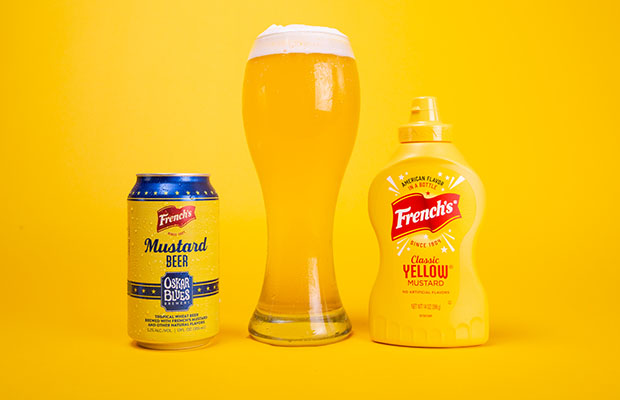
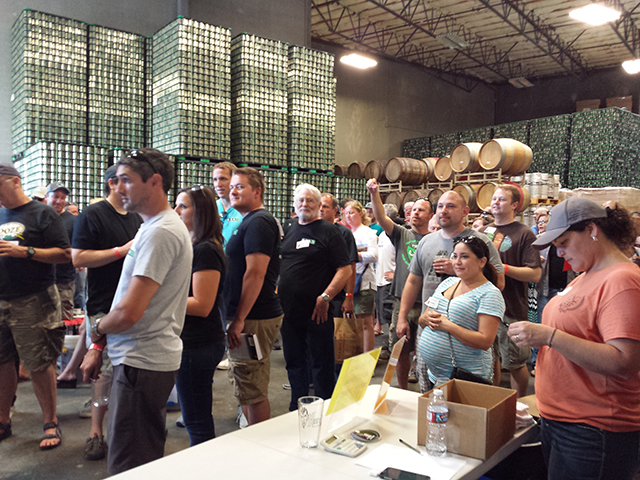
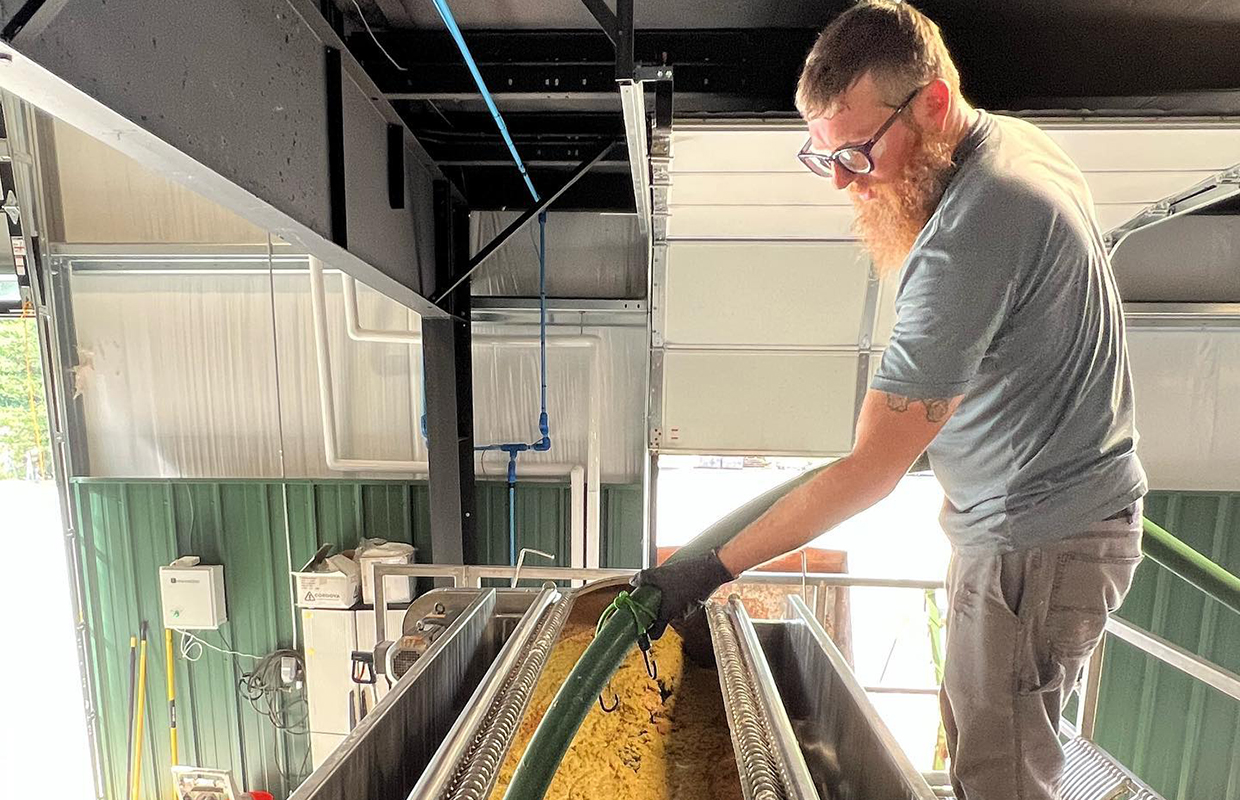
1 Trackback / Pingback